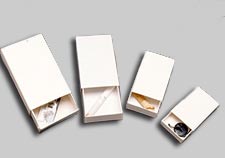- 01: Introduction
- 02: History
- 03: Propellants, Firearms, and Ammunition Development
- 04: Modern Firearms Manufacture
- 05: Small Arms Ammunition
- 06: Evidence Handling Procedures
- Introduction
- Objectives
- AFTE Knowledge and Ability Factors
- Types of Evidence
- Associative Evidence
- The Crime Scene
- Evidence Submission
- Laboratory Evidence Handling
- Case Tracking Within the Laboratory
- Firearm and Toolmark Examination Considerations
- Selected Bibliography
- 07: Equipment and Instrumentation
- 08: Examination of Firearms
- 09: Cartridge and Shotshell Examination
- 10: Characterization and Evaluation of Fired Projectiles
- 11: Bullet Comparison and Identification
- 12: Gunshot Residue and Distance Determination
- 13: Toolmark Identification
- 14: Communicating Results
- Resources


Fired Cartridge Cases and Shotshells
Home > Evidence Handling Procedures > The Crime Scene > Collection of Evidence > Fired Cartridge Cases and Shotshells
Fired cartridge cases and shotshells are most often found at incidents involving semiautomatic and full automatic weapons.
If agency protocols mandate the direct marking of evidence, a metal scribe should be used to mark inside the mouth of the cartridge case or on the side of the case, near the mouth. Fired shotshell cases should be marked at the metallic base, where the base joins the plastic or fiber body. Plastic shotshells can be scribed in the thick plastic area near the base. Markings made with permanent markers tend to fade after normal handling in the laboratory. Agency protocol should always be followed, and evidence should not be marked directly unless specifically mandated.

Small evidence boxes
Recommended packaging for fired cartridge cases and shotshells is similar to bullets. To protect the microscopic marks on these fired components, the cartridge cases and shotshells should be packaged separately to prevent them from striking each other.
Unfired Ammunition
Unfired ammunition has evidentiary potential and should be collected, marked, and packaged in a manner similar to fired cartridge cases and fired shotshells. Cartridges that are cycled through the action of a firearm may bear extractor and ejector marks identifiable with a specific firearm and should be collected for forensic examination.




